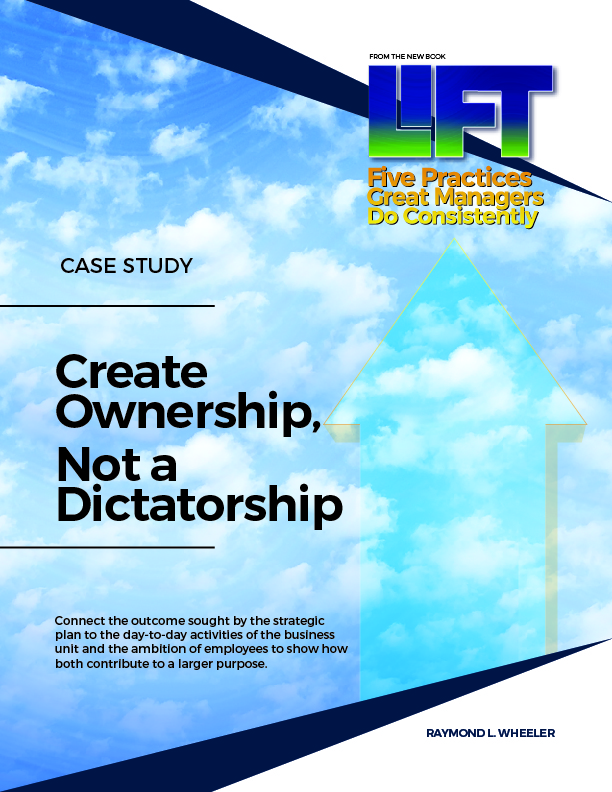FROM THE NEW BOOK Lift: Five Practices Great Managers Do Consistently by Raymond L. Wheeler
Case Study: Create Ownership, Not a Dictatorship
Connect the outcome sought by the strategic plan to the day-to-day activities of the business unit and the ambition of employees to show how both contribute to a larger purpose.
Situation
The inside sales team of a privately held manufacturing company used excessive discounts to meet their sales quota. However, they did not meet consistently meet their gross profit targets. The executive team demanded higher pricing to offset the flagging gross profit. These demands alienated the sales team, who determined to ignore attention to gross profit and work solely for their commission.
Action
The sales manager empathized with frustration the team felt in facing price objectives from their customers. He created a discounting spreadsheet by territory based on the cost accounting of each product. He taught the sales team the significance of their gross profit numbers and showed them the impact of discounts on gross profit by territory and overall sales numbers. He encouraged them to create a sales and discount strategy based on this new tool.
Benefits
Empowered by their new business acumen, the team developed their own sales strategy and quotas that exceeded their past performance. They met their gross profit objectives, and their sales targets consistently and were able to make a business case for discounts they did give. The sales manager created a culture that could hear the truth about the need for gross profit and worked in a way that benefited the company’s market strategy.
Discussion
Creating ownership among employees for the company’s wellbeing taps into the intrinsic motivations of the employees and their drive to direct their own lives, get better at something that matters, work in service of something larger than themselves. Creating ownership for company wellbeing among employees is accomplished by:
- Creating a culture for the truth to be heard
- Designing strategy with input from the entire team
- Aligning performance with strategy through incentives
- Exercising emotional intelligence
Learn More
Some managers pull groups together to produce extraordinary results. Others exist in chaos of emotional excesses and deficiencies. Why? What is the difference between the two? Through a series of interviews and observations, Dr. Ray Wheeler identified five practices that characterize the actions of remarkable managers who Lift performance and morale by consistently building ownership, working facts, knowing their people and themselves, managing activities, and building a climate of hope. In illustrating the components of the five practices of Lift with case studies and clear explanations, Ray offers a way forward for anyone looking to improve the way they manage their team.
LIFT is available on Amazon.com. Get your copy today!

